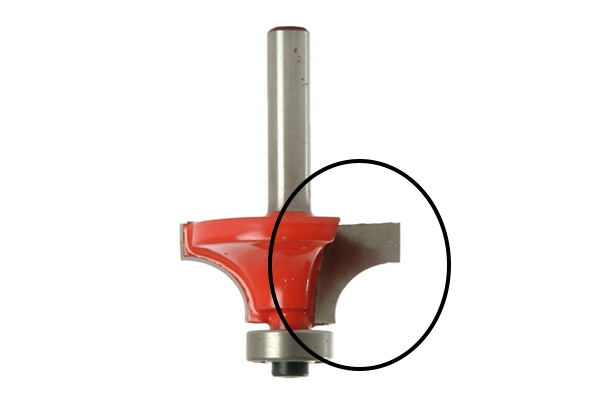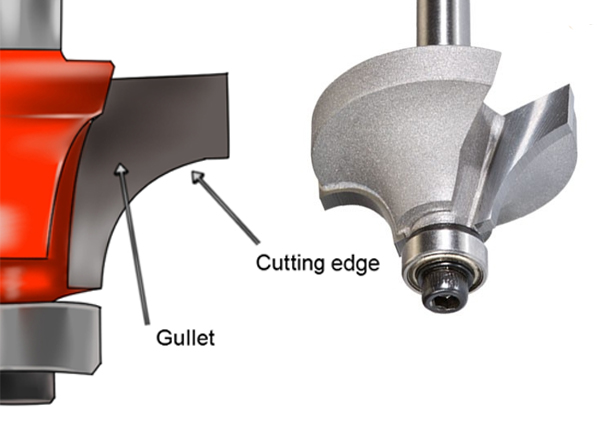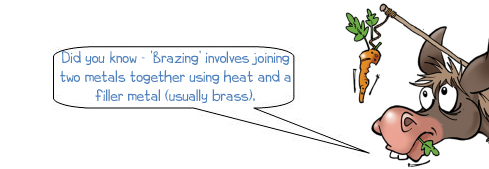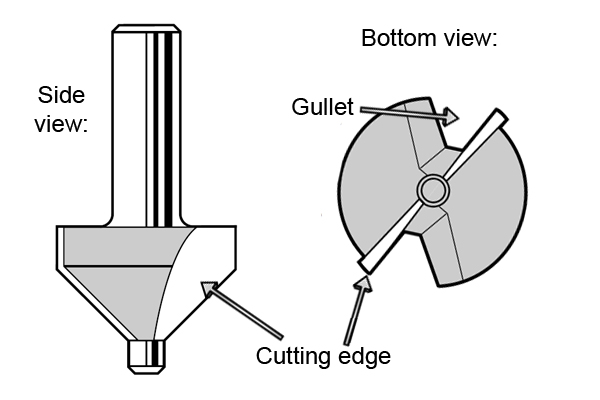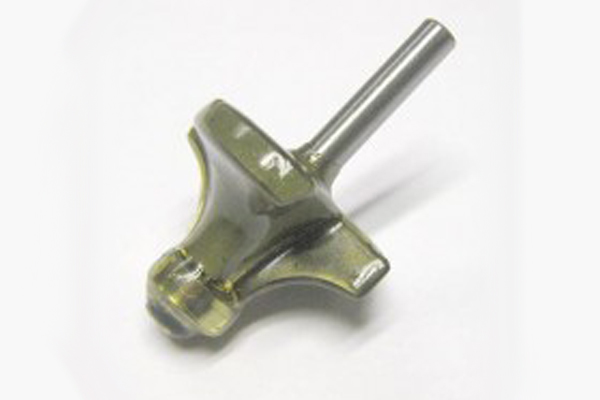 |
||||
What is the shear angle of a router cutter flute? |
||||
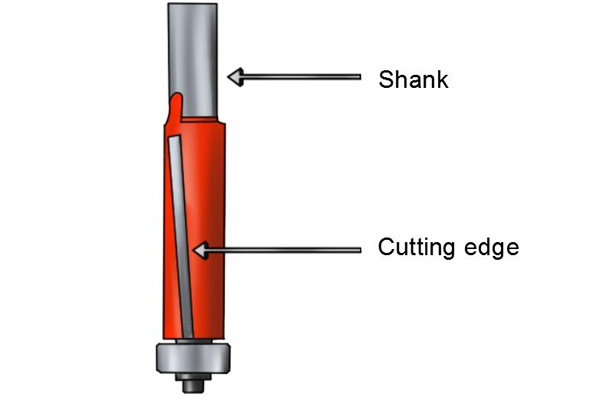 |
The angle at which the cutting edge is positioned in relation to the shank is known as the shear angle.
The router bit on the left has a shear angle. |
|||
Router cutter without a shear angle |
||||
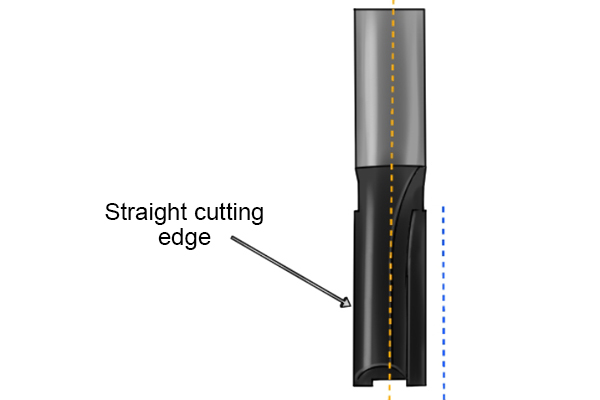 |
Router bits with no shear angle have their cutting edges positioned parallel to the shank, so they run straight down the router cutter's body. |
|||
Router cutters with a shear angle |
||||
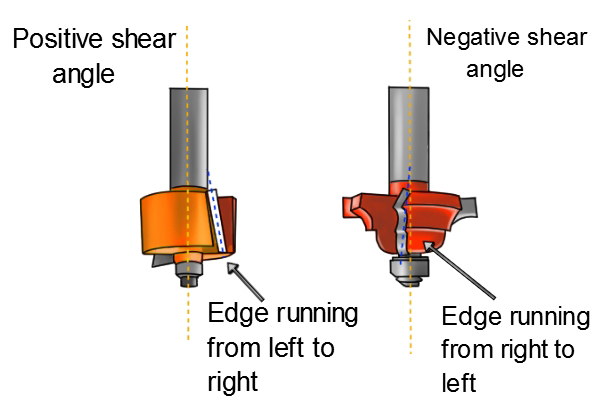 |
The red and orange cutters on the left both have cutting edges positioned at an angle to the shank.
Bits like this will cut material in a similar way to a plane, shaving the material rather than chipping it. This less aggressive action produces a smoother cut and is, therefore, less likely to tear or scorch the material. |
|||
Positive and negative shear angles |
||||
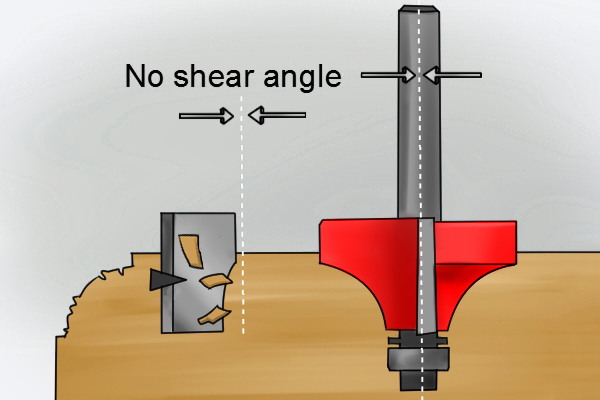 |
This is simply the direction in which the cutting edges are angled. Both will produce a smooth cut, but a negative shear angle will produce an even smoother finish, making it ideal for working with materials such as laminate. Cutters with a shear angle leave a much smoother finish as they shave the material away from the surface. |
|||
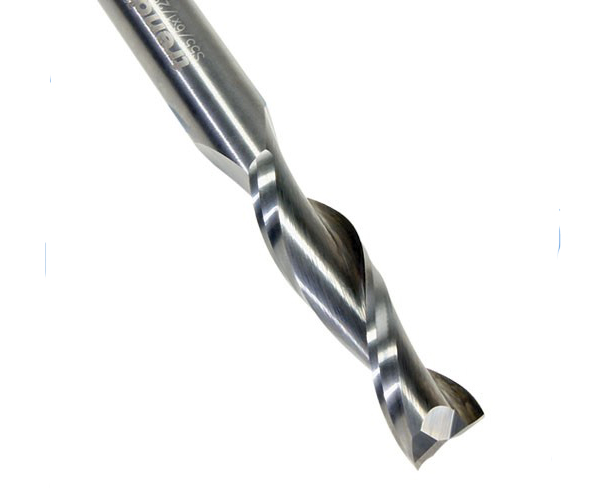 |
Some cutters have a shear angle which is barely noticeable; others have a more pronounced one. The greater the shear angle (the more angled the cutting edges) the smoother the cut will be. This is why spiral bits produce the neatest cut of all - because their flutes wind right around the body, instead of straight down it.
A router bit with a shear angle will also be more efficient at expelling the waste material, compared to one without. This is because it scoops the debris out, rather than pushing it. |
|||
 |
||||
What is the relief angle of a router cutter flute? |
||||
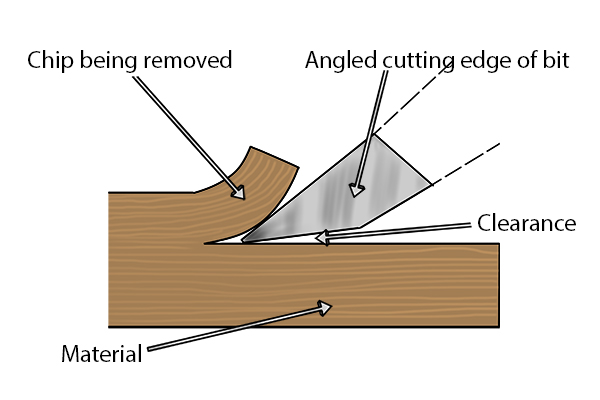 |
On every router bit, the tip of the cutting edge is ground at an angle. This is known as the relief angle. A relief angle is needed so that there is clearance between the cutting edge and the material. A cutting edge with no relief angle would burn the material.
There are two types of relief angle found on router bits: |
|||
Flat grind relief |
||||
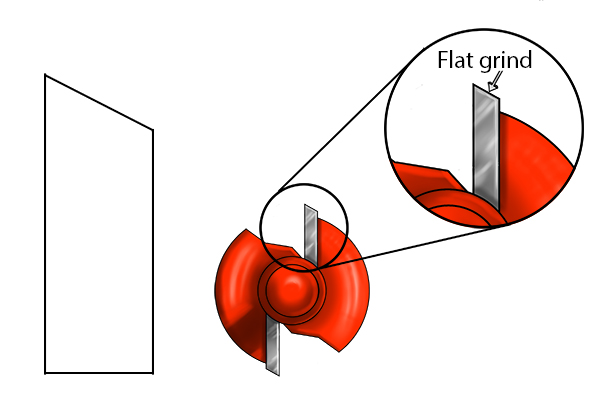 |
These router bits have a flat angled edge and are the most commonly found type. |
|||
Radial relief |
||||
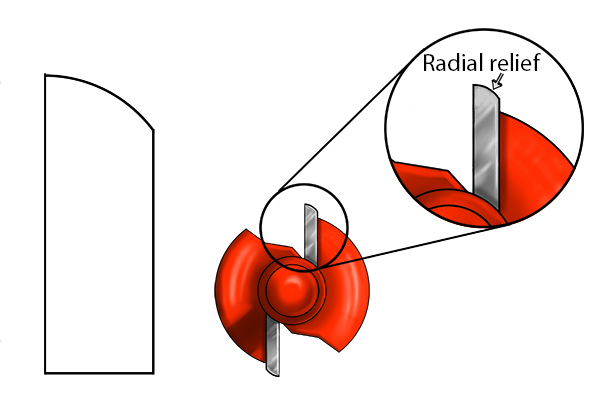 |
Radial relief router cutters have an edge that curves around.
Manufacturers claim that radial relief offers greater support to the cutting edge and its curved profile is less prone to chipping. This is because the shape provides more clearance for the cutting edge as well as leading it into the material in a smooth motion. |
|||
How many flutes do you need on a router cutter?
|
||||
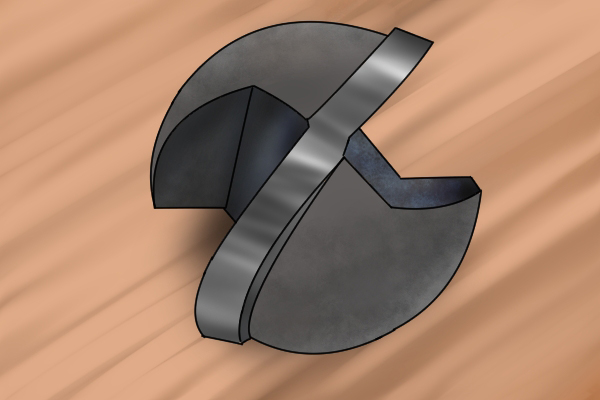 |
Most router cutters have two flutes. However, straight and spiral router bits can have with one, two, or even three or four. As a general rule...Working with harder or more brittle materials (hardwoods, plastics etc.) = more flutes.
Faster, rougher work in soft materials (softwoods) = fewer flutes. |
|||
Single flute |
||||
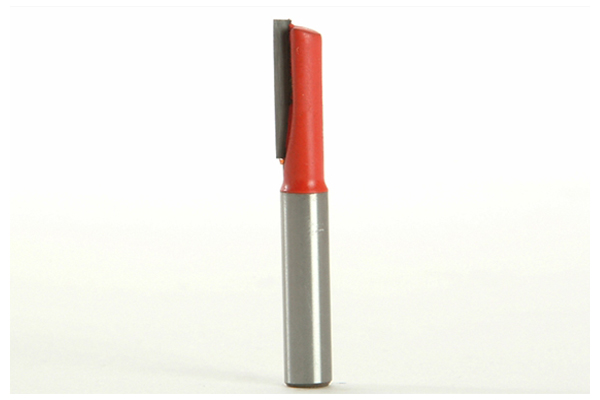 |
Router bits with one flute are better for fast cutting in softer materials.
They cut and remove more material per rotation, but this tends to result in a rough finish. This is because the load is placed on a single flute only, rather than being distributed across several. |
|||
Two or more flutes |
||||
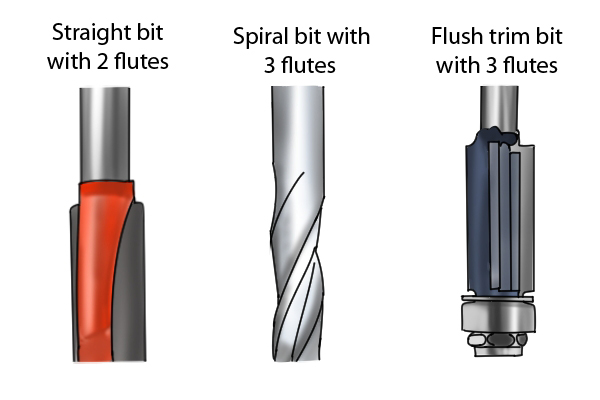 |
Router bits with two or more flutes are better suited to cutting into harder materials.
Compared to a single-flute bit, the work is being spread between several edges rather than just one. This means that the cutting action is slower and less aggressive, but a much neater finish is produced. |
|||
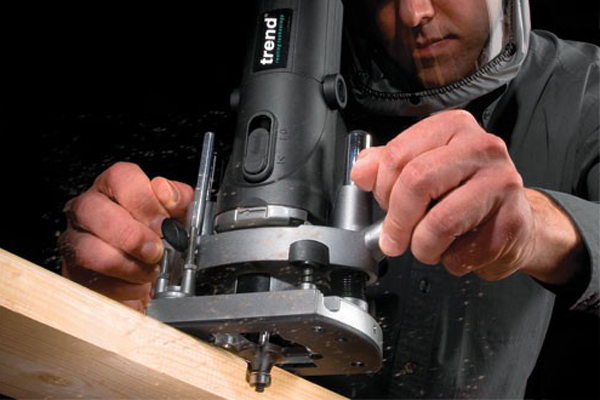 |
Wonkee Donkee Trend TOP TIPWhether you purchase a single or multiple flute router bit, you should ensure that the length of the flute(s) does not exceed three times the diameter of its body. Cutters with very long cutting edges are more prone to bending or breakages, as their length makes them unstable at high speeds. |
|||
What are stagger tooth flutes?
|
||||
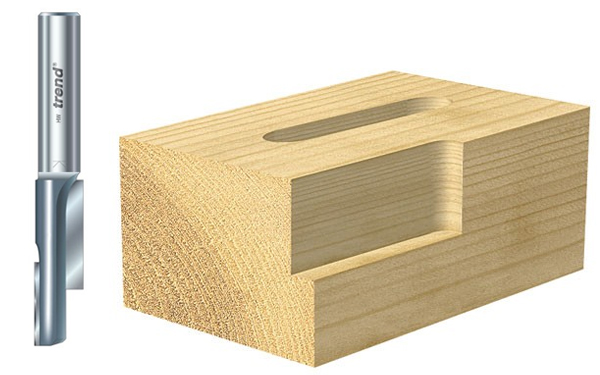 |
On most router bits, the cutting edge will extend the entire length of the flute. Stagger-tooth flutes are a relatively new form of router bit technology and can only be found on some straight bits. Instead of having a single cutting edge spanning the length of the flute, they have several shorter cutting edges positioned at intervals along it. |
|||
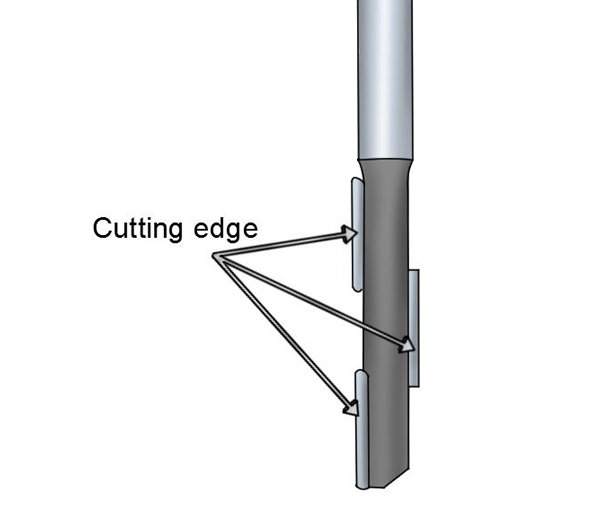 |
The cutting edges are usually positioned opposite one another around the body of the bit. This way of arranging the cutting edges means that the stagger-tooth bit combines the speed and efficient waste removal of a single-flute bit, with the neat finish produced with a multi-flute bit.
The cutting edges of a stagger-tooth bit may be set at an angle to the shank. This means the bit works in a similar way to a spiral bit. However, unlike the cutting edges of a spiral bit, stagger-tooth edges are not connected in a continuous spiral, so there is more room for the waste material to be ejected. |
|||
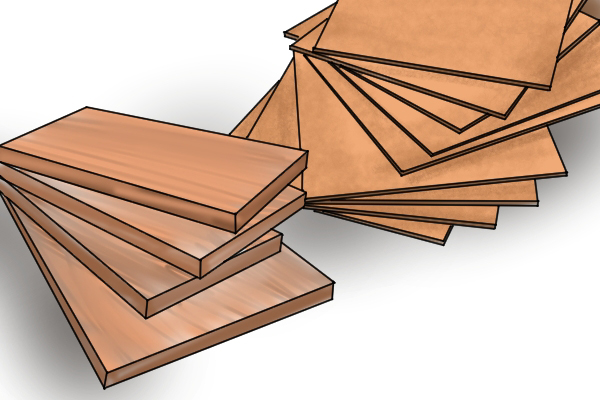 |
Because of their complex design, stagger-tooth bits tend to be more expensive than bits with regular flutes.
Due to their additional cutting edges, they are ideal for use in abrasive materials such as plywood and MDF |
|||






